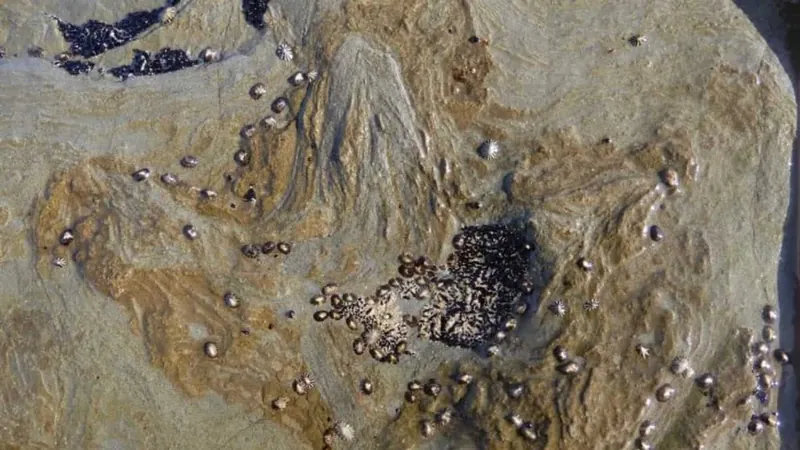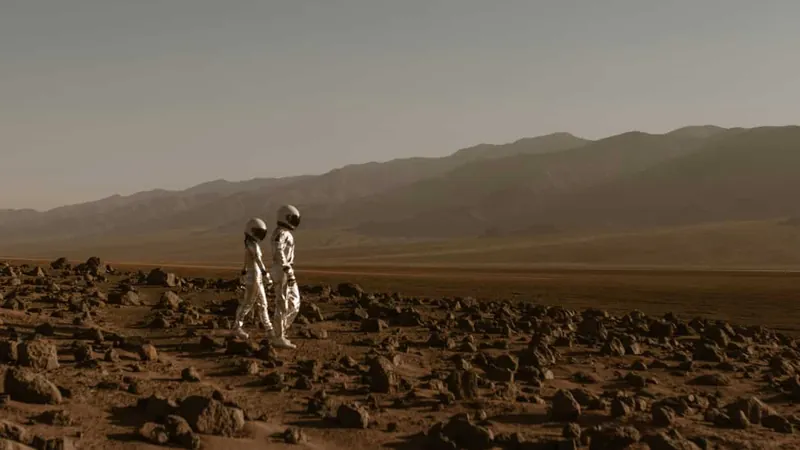
Giant Carnivorous Dinosaurs Thrived in Freezing Australia During Antarctica Era!
2024-09-28
Introduction
In a groundbreaking discovery, scientists have uncovered the thrilling existence of giant carnivorous dinosaurs in southern Australia when it was still connected to Antarctica. This astonishing revelation dates back to the Early Cretaceous period, a time when massive theropods roamed the icy landscapes, navigating river floodplains that thawed during the summer months.
Significant Discoveries
The findings, published in the prestigious journal Alcheringa, detail the discovery of dinosaur tracks in the Wonthaggi Formation, located south of Melbourne. These tracks are estimated to be between 120 million and 128 million years old! The evidence points to 18 different theropod dinosaurs, with additional tracks indicative of four ornithopod dinosaurs—small herbivores that likely served as prey for these fearsome carnivores.
Expert Insights
According to Anthony Martin, the lead author of the study and a professor at Emory University’s Department of Environmental Sciences, this discovery provides compelling evidence that ancient polar environments sustained large carnivorous species. 'The large theropods would have hunted for smaller dinosaurs, fish, and turtles, creating a complex ecosystem even in such a cold climate.'
Theropods: Predators of Their Time
Theropods, known for their bipedal stance and three-clawed toes, were the ultimate predators of their time. These recent track findings challenge previous assumptions about dinosaur presence in polar regions and suggest a more vibrant prehistoric ecosystem than researchers initially believed.
Historical Context
For years, co-authors Patricia Vickers-Rich and Thomas Rich have been dedicated to unearthing fossils in Victoria, a region historically significant for being part of the ancient supercontinent Gondwana, which began to break apart nearly 100 million years ago. Back then, the polar environment consisted of rift valleys and braided rivers, characterized by extreme winter conditions, such as prolonged darkness and freezing temperatures.
Track Findings and Implications
While several polar dinosaur fossils have been retrieved from the Wonthaggi Formation, they typically include small bone fragments and teeth. Researchers previously proposed that flooding during springtime might have transported these fragments to the area. However, the discovery of extensive tracks indicates that these dinosaurs were not just temporary visitors; instead, they thrived right where their remains were later found.
Continuing Research and Future Discoveries
'Our discovery demonstrates that a wide variety of dinosaurs lived and roamed in this region,' says Martin. 'It turns out that dinosaur tracks are much more prevalent at this site than we ever anticipated.' One notable contributor to this study, Melissa Lowery, was instrumental in identifying the additional tracks that revealed the dynamic behavior of these dinosaurs as they moved across wet sand and mud in the floodplains, adding a layer of understanding to their daily lives.
Conclusion
Could this discovery change the way we view dinosaur habitats and behaviors during prehistoric periods? As researchers continue parsing through remnants of what was once a thriving ecosystem, one thing is certain: the icy landscapes of ancient Australia held secrets that are only just beginning to unravel! Stay tuned for more revelations from the frozen past!




 Brasil (PT)
Brasil (PT)
 Canada (EN)
Canada (EN)
 Chile (ES)
Chile (ES)
 España (ES)
España (ES)
 France (FR)
France (FR)
 Hong Kong (EN)
Hong Kong (EN)
 Italia (IT)
Italia (IT)
 日本 (JA)
日本 (JA)
 Magyarország (HU)
Magyarország (HU)
 Norge (NO)
Norge (NO)
 Polska (PL)
Polska (PL)
 Schweiz (DE)
Schweiz (DE)
 Singapore (EN)
Singapore (EN)
 Sverige (SV)
Sverige (SV)
 Suomi (FI)
Suomi (FI)
 Türkiye (TR)
Türkiye (TR)